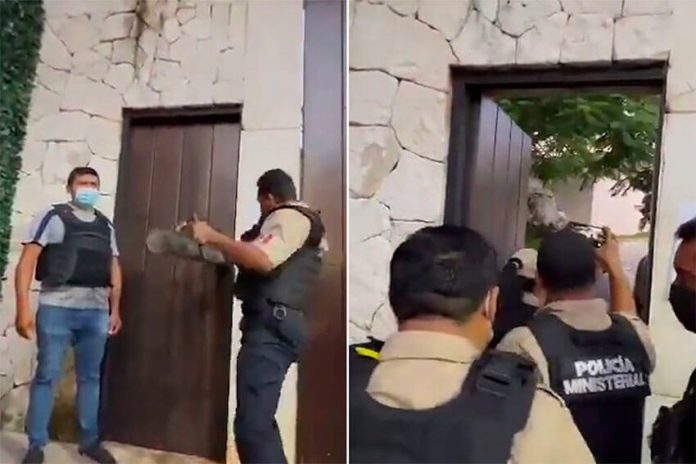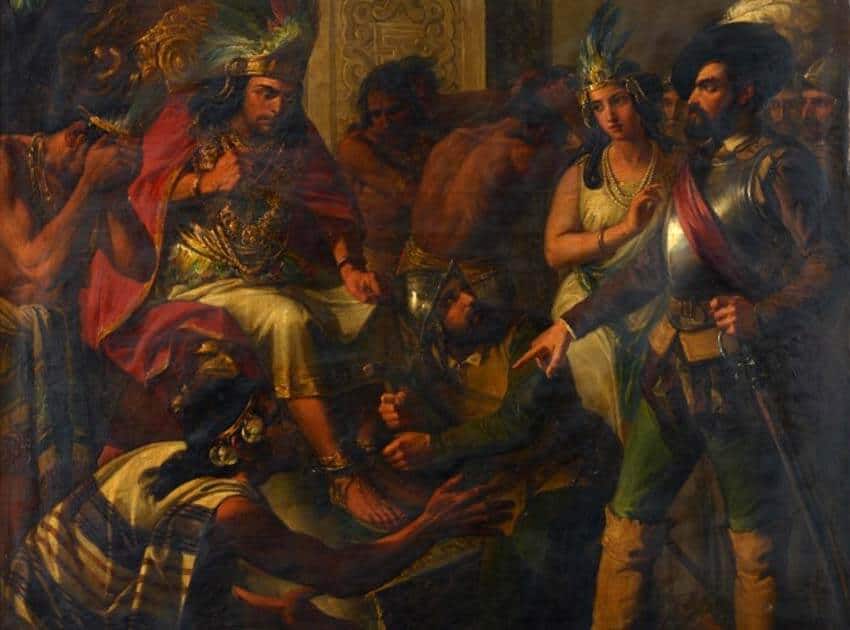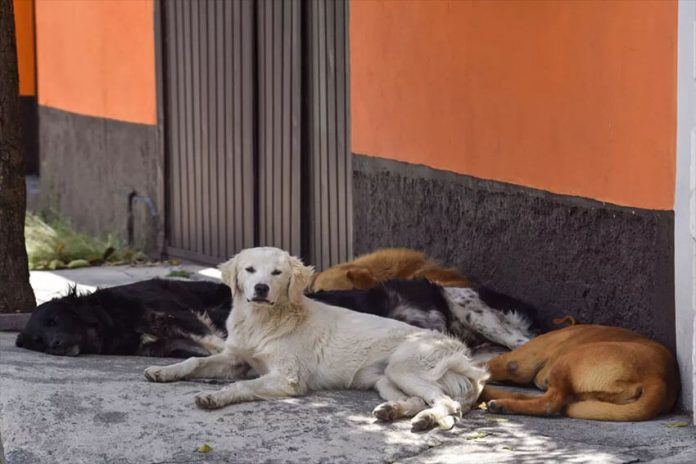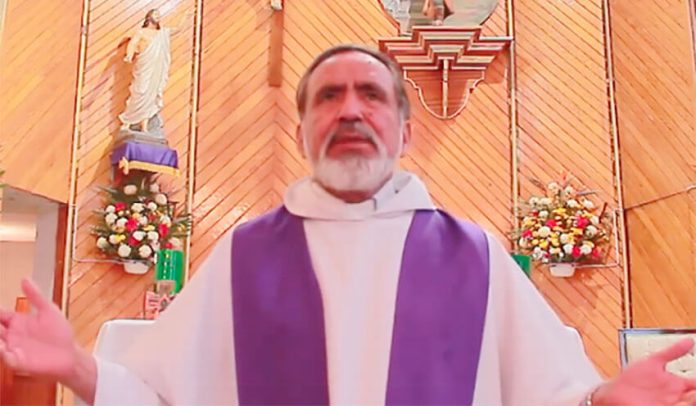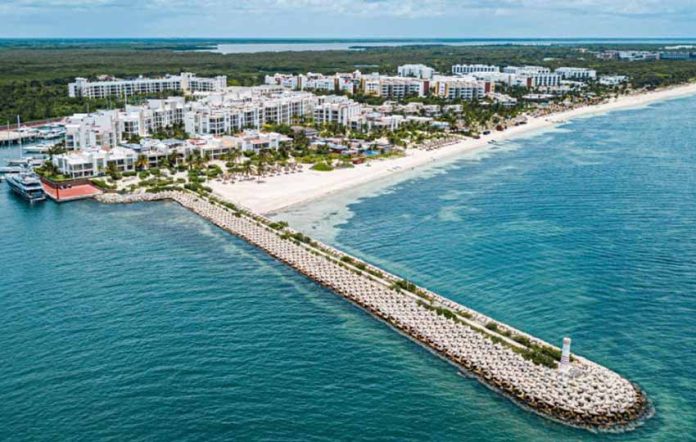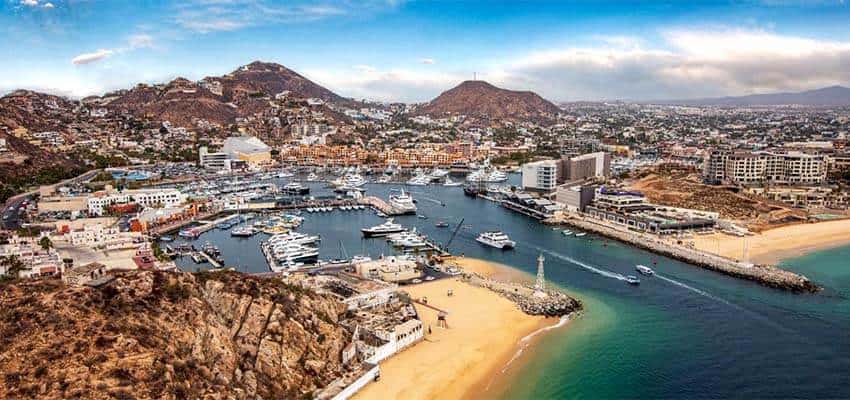Officials with the Campeche Attorney General’s Office (FGE) on Monday used force to enter and search the Campeche city home of Institutional Revolutionary Party (PRI) national president Alejandro Moreno, who is accused of money laundering, tax evasion and other crimes.
Video footage shows a police officer using a battering ram to open the door of Moreno’s luxury home, located in a residential estate near the waterfront in the state capital. Overseen by Attorney General Renato Sales, the search of the unoccupied home began at 5:00 a.m. Monday.
Campeche Governor Layda Sansores, who has disseminated compromising audio recordings of conversations Moreno allegedly had while governor of the Gulf coast state, noted on Twitter that the FGE had conducted the search. It was previously authorized by a judge and, in accordance with due process, a lawyer for Moreno was present as it was carried out, she wrote.
Sales, a former national security commissioner, said the search was conducted to “inspect the material with which the … [house] was built” and to establish what artworks are inside. “Building with granite or stone is not the same as building with Carrara marble, for example,” the attorney general said.
Moreno, a federal deputy commonly known as “Alito,” is under investigation in Campeche for illicit enrichment, tax fraud, money laundering, abuse of authority, embezzlement and improper use of powers. While a federal deputy between 2012 and 2015, Moreno allegedly bought at least 13 lots in the exclusive Lomas del Castillo residential estate in Campeche and subsequently concealed his apparent ownership of the land. According to the FGE, he owns at least 25 properties in Campeche.
Mexicans Against Corruption and Impunity (MCCI), a non-governmental organization, said in a report last month that Moreno, governor of Campeche between 2015 and 2019, “used his political influence and power to triangulate money through the purchase and sale of properties with the objective of leaving no trace on his declarations of assets or … [in documents submitted to] tax authorities.”
The PRI national president has denied the accusations. He said Monday that he was the victim of politically motivated persecution perpetrated by both the Campeche and federal governments, and asserted that the search of his home was part of a “campaign of hate” against him.
Moreno previously claimed on Twitter that the incriminating audio presented by Morena party Governor Sansores – in which he is heard discussing 25 million pesos in questionable campaign funding and asserting that journalists should be allowed to die of hunger, among other compromising remarks – was “obtained and manipulated with an espionage system, which was never delivered to the Federal Police and was ‘stolen’ by the current attorney general of Campeche.”
La FGE realizó una diligencia de cateo a la residencia de Alejandro Moreno Cárdenas, previamente autorizada por un Juez, la que se desahogó en todo momento en presencia del abogado defensor, respetando el debido proceso del indiciado. pic.twitter.com/ovvwsVpM9Q
— Layda Sansores (@LaydaSansores) July 4, 2022
He said Monday that he would travel to the United States and Europe to report political persecution orchestrated by the government of President López Obrador. “We’re going to denounce the president at the United Nations, the Organization of American States, the Inter-American Commission on Human Rights and the European Union. We’re going to report what’s happening,” Moreno said.
He described the search of his home as a publicity stunt designed to harm his reputation. “There is a systematic campaign of hate and denigration, started against me by the governor of Campeche two months ago. It exceeds all legal and constitutional limits,” Moreno said.
The campaign is evidence of the ruling Morena party’s profound intolerance of differing views, he said. “… We’re not going to allow this repressive and authoritarian government to continue with its persecution. … In the coming days I will go on an international tour and … we’re going to denounce this corrupt and repressive government before all the international organizations,” Moreno declared in a passionate address from PRI’s Mexico City headquarters.
The national president of Morena – a party founded by López Obrador – rejected Moreno’s claim of persecution, asserting that prosecutor’s offices act independently of government. The search of the PRI leader’s home was related to investigations being carried out by the Campeche Attorney General’s Office, Mario Delgado said.
“There is a great difference compared to what we went through in the past. Prosecutor’s offices are no longer political arms of the leaders of the day. Prosecutor’s offices are autonomous and there is no political motivation in their conduct,” he said.
“Due to the great reputation he has, I know … it’s hard to believe Alito Moreno has committed a crime,” Delgado added facetiously. “[In order for him to face consequences] the prosecutor’s office will have to prove it.”
Speaking at his regular news conference on Tuesday, López Obrador said he didn’t agree with the way in which the search of Moreno’s home occurred. “I’m talking about the way in which they entered … the home of the PRI president. I’m not defending the man, I’m saying that these methods shouldn’t prevail in a democratic country that is respectful of freedoms,” he said.
“The man is not a saint of my devotion [but] I don’t agree with the method because it’s undignified. You can’t humiliate [or] harm people’s dignity,” López Obrador said, adding that the search should have occurred “without propaganda.”
With reports from Reforma, El País and El Economista
